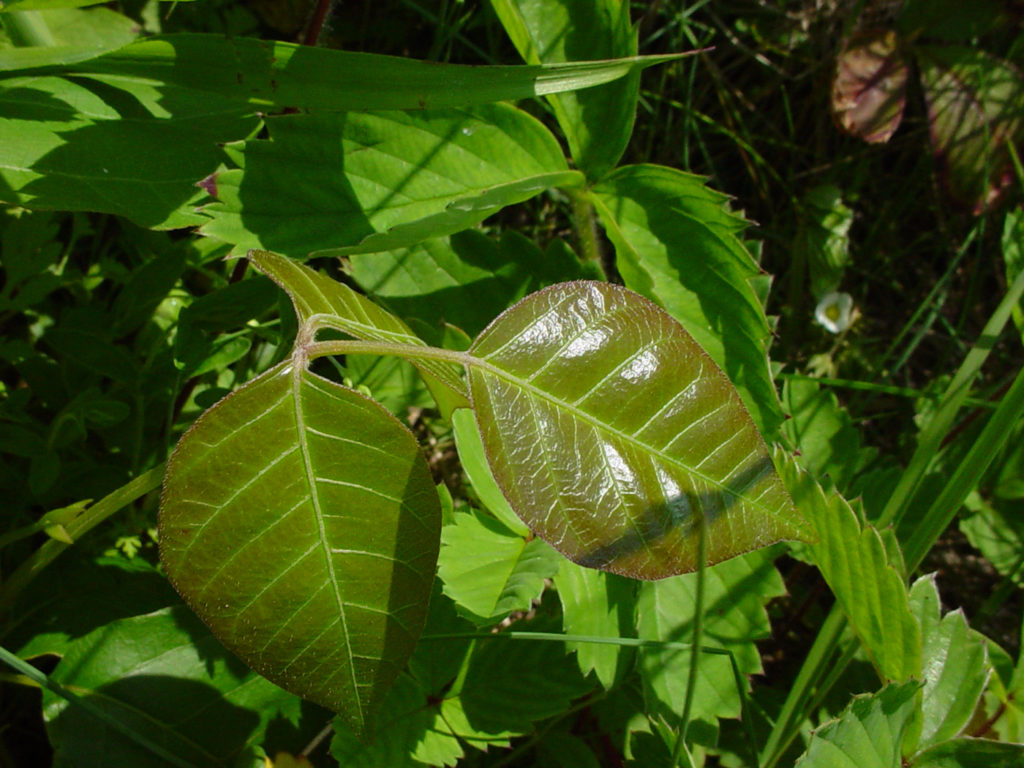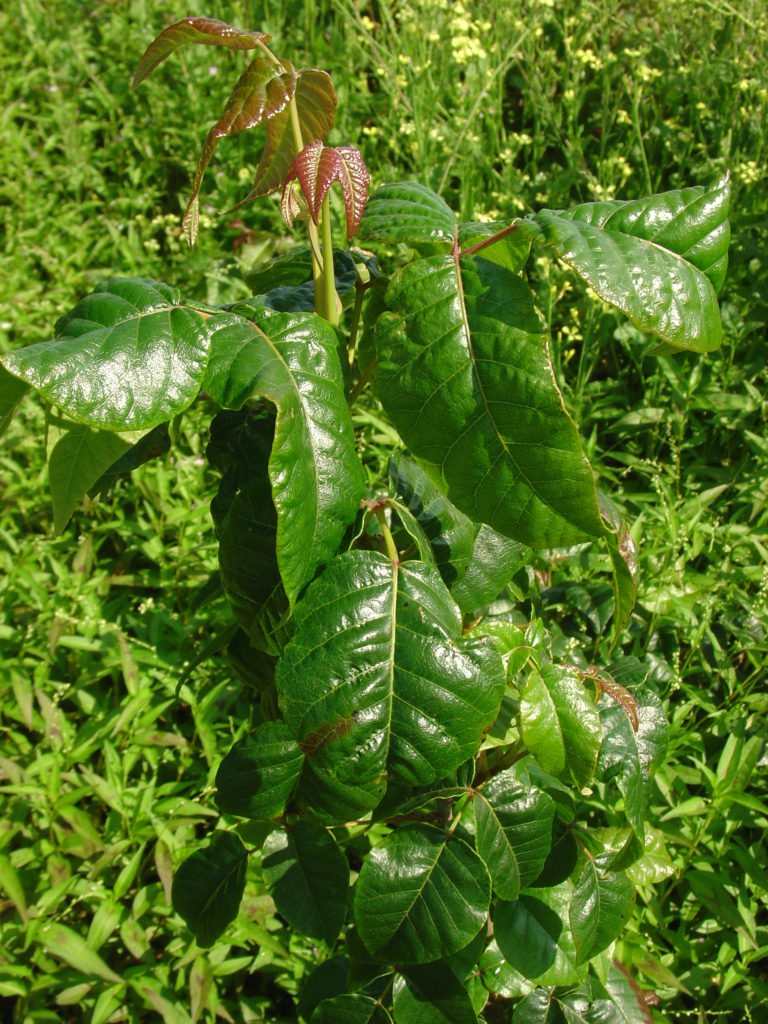How to identify poison ivy
“Hairy vine, no friend of mine. Leaves of three, let them be.”

These rhymes are warnings about poison ivy, a plant that can cause itchy, blistering rashes that last for weeks. Common throughout much of the United States and Canada, this woody perennial is among the top plants to avoid while in the wilderness. And unfortunately, it can be difficult to identify.
There are two species of poison ivy commonly found throughout the US: eastern poison ivy (Toxicodendron radicans) and western poison ivy (T. rydbergii). While these two species have many similarities, the eastern variety typically grows as a vine, while the western variety is a low-growing shrub. In the US, the ranges of the two species overlap so it’s possible to find both species growing in the same field or forest. The two species can also hybridize, according to the US Forest Service, which only complicates matters.
Therefore, poison ivy can be structured like a vine, climbing up a tree or sprawling over the ground. Or it can be more like a small bush. Or some combination of both.
Key poison ivy characteristics
One of the most telltale characteristics of poison ivy is that it has compound leaves, with each leaf being composed of three leaflets. To the untrained eye, this simply looks like a cluster of three leaves.
“Leaves of three, let them be.”
The leaflets are typically about 2 to 4 inches long, and their shape can vary greatly from tear-shaped to wavy or lobed. In addition, the leaflet edges can vary from jagged to smooth.
“Plants will be plants,” said Glen Mittelhauser, a Maine naturalist who has authored multiple plant field guides. “They don’t read their own [field guide] description. Some species like varying, and poison ivy is one of them.”
The leaves of poison ivy are often glossy, but not always. During the summer, the plant produces clusters of tiny white flowers, as well as green to white berries. And in the fall, its leaves turn red, according to Maine State Horticulturist Gary Fish.
“There are other plants with glossy leaves, and other plants with leaflets of threes,” Mittelhauser said. “So with the basic description, you tend to call more things poison ivy than actually are.”
As a vine, poison ivy produces alternating stems and attaches itself to trees or other structures with hairy, aerial roots that sprout along the stem, according to the Home and Garden Information Center of Clemson Cooperative Extension in South Carolina.
“Hairy vine, no friend of mine.”
Both species are found growing in a wide variety of habitats, from woodlands to backyards. They’re hardy and can tolerate being wet or dry, but they especially thrive in open, sunny areas; therefore, poison ivy is often found along the edge of fields or in forest clearings.
The rash
Contact with poison ivy often results in a rash, which is caused by urushiol — a sticky, oily resin that covers the entire plant.
Contact with the plant doesn’t have to be direct to result in a rash. For example, if you pet a dog that has waded through poison ivy, the irritating resin could be transferred to your skin from the dog’s fur. Or you can pick up the resin by touching objects such as clothing or gardening tools that have touched the plant.
The rash typically takes 12 to 48 hours to develop, and is characterized by redness, swelling and tiny blisters, according to the Mayo Clinic. It’s often maddeningly itchy and can last for two to three weeks. Furthermore, if you inhale smoke from burning poison ivy, you may have difficulty breathing.

Some people are more sensitive than others to urushiol, and a person’s sensitivity can change over time, according to Clemson Cooperative Extension. The plants are most dangerous in spring and summer when oil content is highest.
If you know that you’ve come into contact with poison ivy, wash your skin right away to reduce your chances of developing a rash, suggests the Mayo Clinic. There are several over-the-counter cleansing agents formulated to break down the resin and remove it from your skin. You can also simply use soap and water, though soaps containing oil can spread the resin over more of your skin, making matters worse.
If you do get a poison ivy rash, don’t scratch it, even though it’s tempting. Scratching could cause the skin to break and become infected with bacteria. It can also cause scarring.
Mild cases of the rash can be treated at home with soothing lotions and cool baths, according to the Mayo Clinic. However, if the rash is severe or widespread, you should see your doctor, who can prescribe medication, such as an oral steroid to reduce symptoms, topical products to reduce redness and itching, and antibiotics if the rash is infected with bacteria. Specifically, the Mayo Clinic recommends seeing a doctor if the rash affects your eyes, mouth or genitals; if the rash blisters are oozing pus; if you develop a fever greater than 100 degrees Fahrenheit; or if your rash doesn’t get better within a few weeks.

Thanks for the valuable info! After a horrid experience with poison ivy, I am hyper-vigilant these days, but it won’t keep me out of the woods and off the trails. I love hiking!
Hi Karen! So sorry to hear you had a bad experience with poison ivy. My husband is very sensitive to it, so we are always on the lookout. We’ve also run into stinging nettle, which is not nearly as serious but made us itch like crazy for about 2 hours, then went away. In hindsight, the stinging nettle run-in was pretty amusing. Poison ivy — not so much! I’m glad you’re not allowing it to trap you indoors, though! Maybe carry a poison ivy wash solution with you, or even coat your legs with one of those barrier creams.
hello.
can you tell me the name of the 3 leaf, more jagged plant growing behind the poison ivy in the first photo?
is that another kind of poison ivy or sumac?